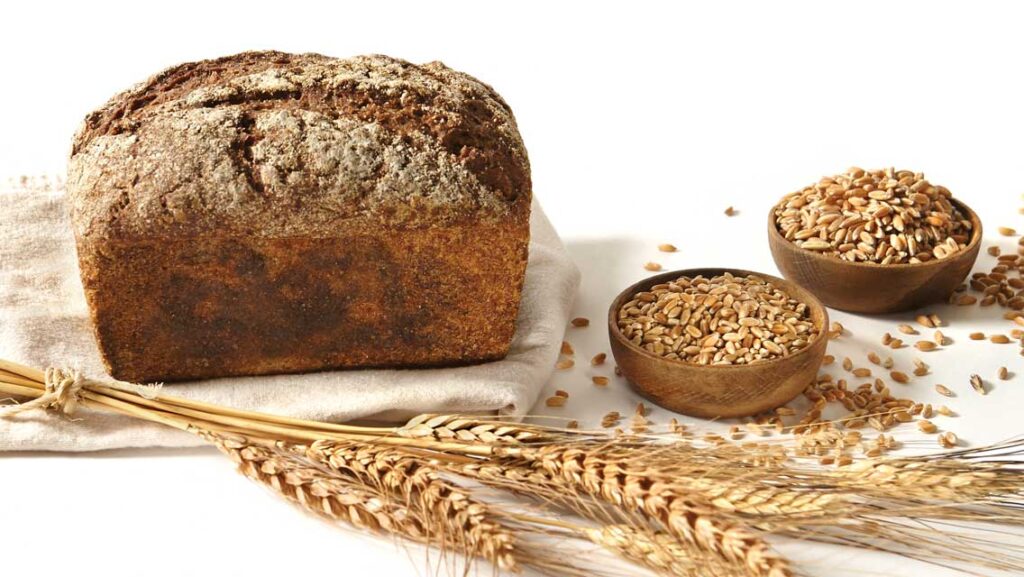Exploring Heirloom Wheat in Modern Baking: A Guide to Flavorful, Sustainable Breads

In the world of modern baking, heirloom wheat is making a triumphant comeback, bringing rich flavors, nutritional benefits, and sustainability to the forefront of artisan bread making. At Delights Bakery, we’re passionate about rediscovering these ancient grains that have been cherished for centuries. In this bakery blog, we’ll dive into the fascinating world of heirloom grains, exploring their unique characteristics, environmental advantages, and how to incorporate them into your bread recipes. Whether you’re a home baker or a bread enthusiast, this guide will inspire you to embrace the art of sustainable baking with heirloom wheat!
What Are Heirloom Wheat Varieties?
Heirloom wheat refers to traditional wheat varieties that have been cultivated for generations, often pre-dating modern industrial agriculture. Unlike modern wheat, which is bred for high yields and uniformity, heirloom wheat retains its genetic diversity, offering distinct flavors and textures. These grains are typically grown organically or sustainably, making them a favorite among artisan bakers.
- Unique Flavors: Nutty, earthy, or even sweet notes that vary by variety.
- Nutritional Benefits: Often higher in protein, fiber, and micronutrients.
- Sustainability: Supports biodiversity and small-scale farming.
- Heritage: Connects bakers to centuries-old agricultural traditions.
Popular Heirloom Wheat Varieties
Here are some standout heirloom wheat varieties and their uses in modern baking:
- Red Fife: A Canadian wheat with a nutty, robust flavor, ideal for rustic sourdough.
- Spelt: Slightly sweet and high in protein, perfect for hearty loaves and pastries.
- Emmer (Farro): Earthy and chewy, great for dense, flavorful breads.
- Khorasan (Kamut): Buttery and rich, excellent for artisan loaves and flatbreads.
- Einkorn: The oldest wheat, with a delicate, sweet flavor for soft breads.
Each variety brings a unique character to your bread baking, allowing you to experiment with flavors and textures.
Benefits of Heirloom Wheat in Baking
Using heirloom grains in your baking offers numerous advantages:
- Enhanced Flavor: Complex, nuanced tastes elevate simple recipes.
- Nutritional Value: Higher in vitamins, minerals, and antioxidants compared to modern wheat.
- Digestibility: Some varieties, like einkorn, may be easier to digest for those with mild sensitivities.
- Environmental Impact: Supports sustainable farming practices and crop diversity.
- Artisan Appeal: Adds authenticity and story to your artisan bread.
How to Use Heirloom Wheat in Baking
Incorporating heirloom wheat into your recipes requires some adjustments due to its unique properties. Here’s a simple guide to get started:
- Start with a Blend: Mix 25-50% heirloom wheat flour with bread flour to balance flavor and structure.
- Adjust Hydration: Heirloom flours often absorb more water; increase liquid by 5-10%.
- Longer Fermentation: Allow extra time for dough to develop flavor, especially for sourdough.
- Gentle Kneading: Avoid overworking to maintain the delicate gluten structure.
- Experiment: Try heirloom wheat in breads, pancakes, or pastries for diverse results.
Sample Recipe: Heirloom Wheat Sourdough
Try this bread recipe to experience the magic of heirloom wheat.
Ingredients
- 1 cup active sourdough starter
- 2 cups Red Fife or spelt flour
- 1 cup bread flour
- 1 1/2 cups lukewarm water
- 2 tsp salt
Instructions
- Mix Dough: Combine starter, water, and flours in a bowl. Mix until a shaggy dough forms. Let rest for 30 minutes (autolyse).
- Add Salt: Incorporate salt and knead lightly for 3-4 minutes.
- Bulk Fermentation: Cover and let rise for 10-12 hours at room temperature.
- Shape: Shape into a round loaf, place in a floured banneton, and let rise for 3-4 hours.
- Bake: Preheat a Dutch oven to 450°F (230°C). Score the loaf and bake covered for 20 minutes, then uncovered for 20-25 minutes.
- Cool: Cool for 1 hour before slicing.
Nutrition: ~140 calories per slice, rich in fiber and micronutrients.
Tips for Baking with Heirloom Wheat
Maximize your sustainable baking with these expert tips:
- Source Quality Flour: Buy freshly milled heirloom flour from local mills or trusted suppliers.
- Store Properly: Keep flour in an airtight container in a cool, dry place to preserve freshness.
- Test Hydration: Adjust water gradually, as heirloom flours vary in absorption.
- Use a Scale: Weigh ingredients for precision, especially with denser grains.
- Pair with Flavors: Add seeds, herbs, or dried fruits to complement heirloom wheat’s nutty notes.
Common Mistakes to Avoid
- Using 100% Heirloom Flour: Without blending, dough may be too dense; start with a mix.
- Over-Kneading: Heirloom wheat has weaker gluten; knead gently.
- Ignoring Fermentation Time: Short rises reduce flavor; allow ample time.
- Storing Improperly: Whole grain flours spoil quickly; refrigerate if not used within weeks.
Frequently Asked Questions
Where Can I Find Heirloom Wheat Flour?
Look for local mills, farmers’ markets, or online suppliers specializing in heirloom grains.
Is Heirloom Wheat Gluten-Free?
No, it contains gluten, but some varieties like einkorn may be easier to digest.
Why Is Heirloom Wheat More Expensive?
Its limited production, organic farming, and milling processes increase costs but ensure quality.
Can I Use Heirloom Wheat in Pastries?
Yes, spelt and einkorn work well in pastries, adding unique flavor and texture.
My Journey to Mastering Perfect Croissants at HomeFinal Thoughts
Heirloom wheat is a treasure in modern baking, offering unparalleled flavor, nutrition, and sustainability. At Delights Bakery, we’re excited to share the joy of baking with these ancient grains, creating artisan bread that tells a story of tradition and care. Try our recipe, experiment with heirloom varieties, and share your creations in the comments below! Have a favorite heirloom wheat or baking tip? Let us know for a chance to feature it!

Comments
Post a Comment